Hoover Reservoir supplies the city of Columbus with its drinking water. At eight different sites around the reservoir is the Hoover Reservoir Park. It is a great recreational resource for residents and tourists, and it is important sanctuary for birds as well. Today I’m going to focus on one of the lesser known sites of this park: Hoover Meadows.
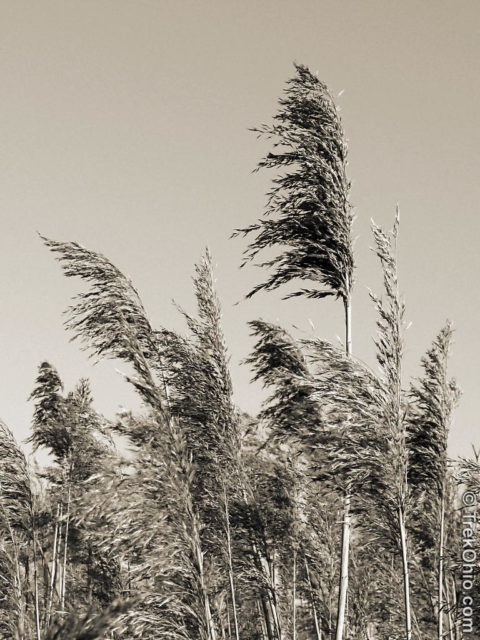
Hoover Meadows is 74.77 acres. Although a sign marks its entrance, the place looks fairly nondescript from the road. A row of conifers divides the parking lot from the rest of the park. Once you walk around the conifers you finally get to see the meadows. Near the entryway there is a large pond that attracts thirsty animals and water fowl. Once you walk past the pond, the trails wind around and back and forth across the meadows. For the most part these trails are very wide, mown paths. Since ticks cling on tall grass while laying in waiting for a victim, it’s important to stay on the path and out of the weeds.
From the entrance facing the rear of the park, you’ll find that the park is narrow, but goes a long way back. To the left of the park are agricultural fields; to the right of the park is a suburban cul-de-sac lined with homes. Lines of trees on the park’s perimeter somewhat obscure your view of the neighboring land.
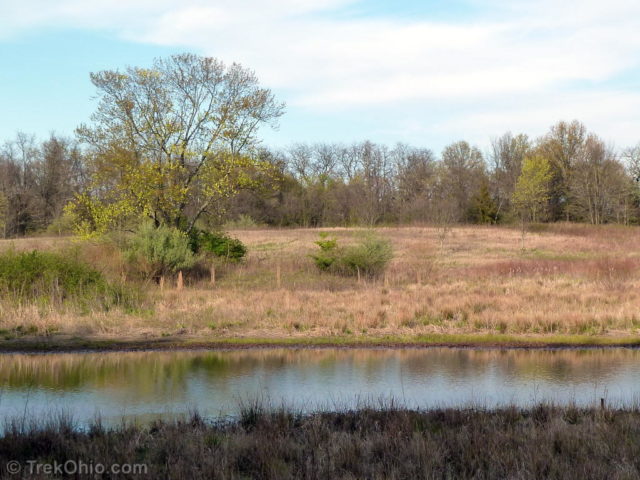
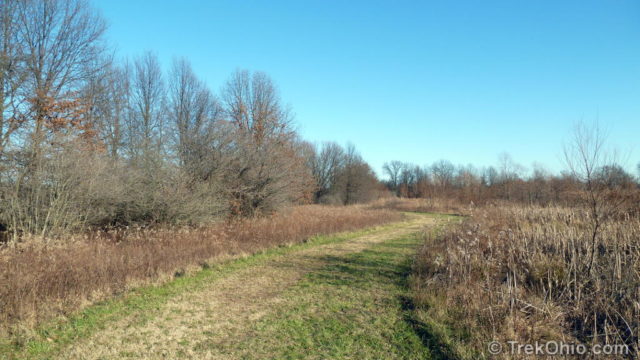
Like many parks with meadows, the park personnel have put out nesting boxes for Tree swallows. Mown paths branch away from the trail and lead to these nesting boxes, but they’re there so that the park personnel can attend to the boxes. If you’re visit at the right time in summer, you can watch the parents feed their young.
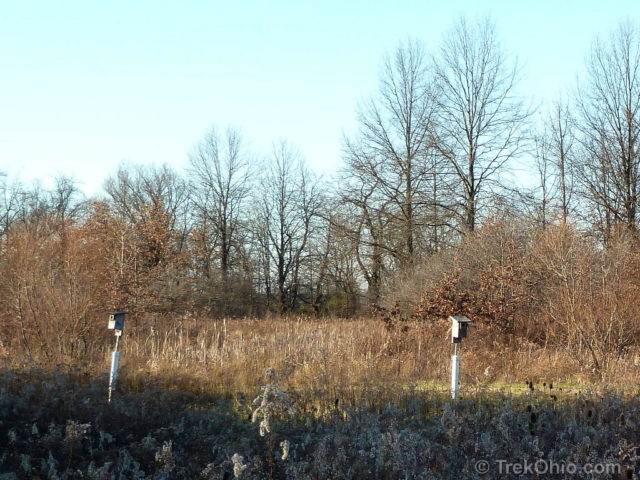
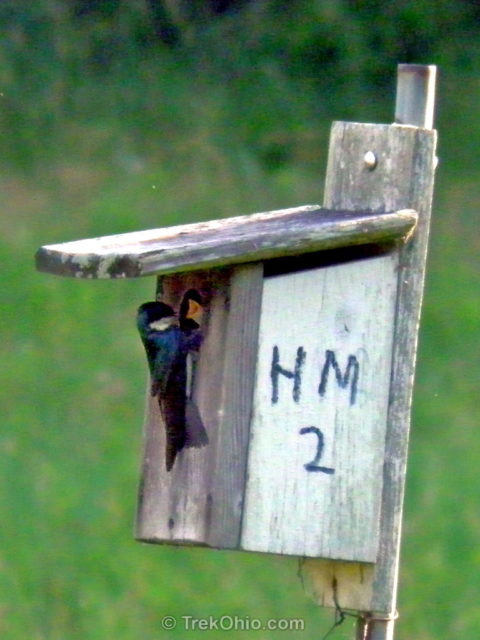
The field has drier areas and wetter areas. In the drier areas you’ll see lots of goldenrod, teasel, grasses and other plants.
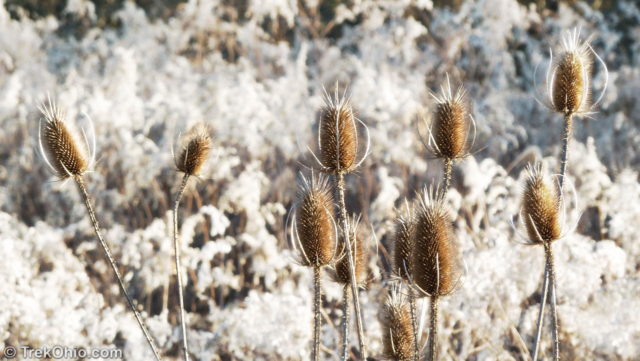
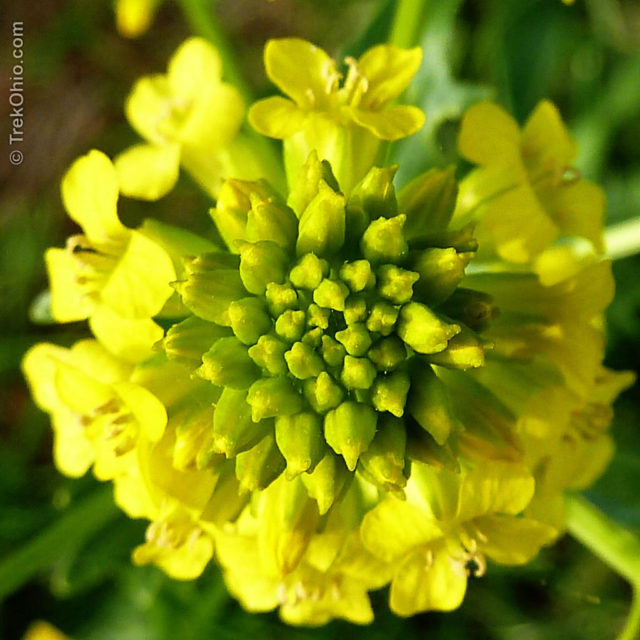
You’ll soon realize that shallow wetlands appear at different spots throughout the meadows. A variety of aquatic plants can be seen in these spots, most prominently the cattail.
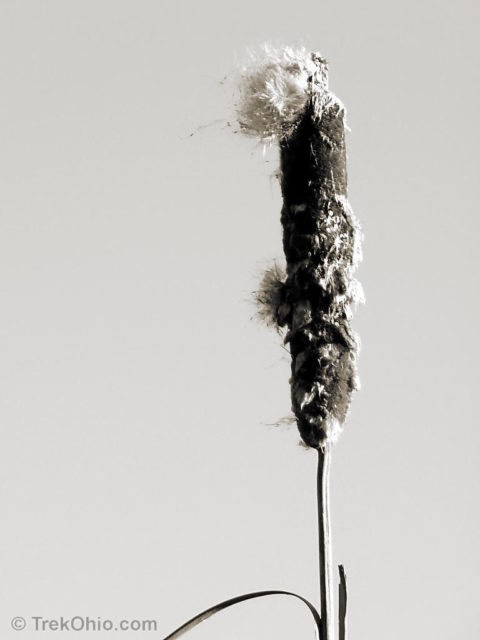
And what goes better with cattails than Red-winged blackbirds? If you visit Hoover Meadows in the spring or summer, you’ll see and hear lots of Red-winged blackbirds.
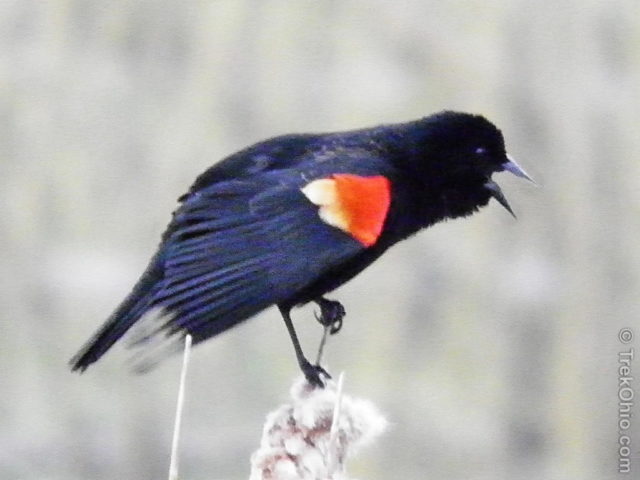
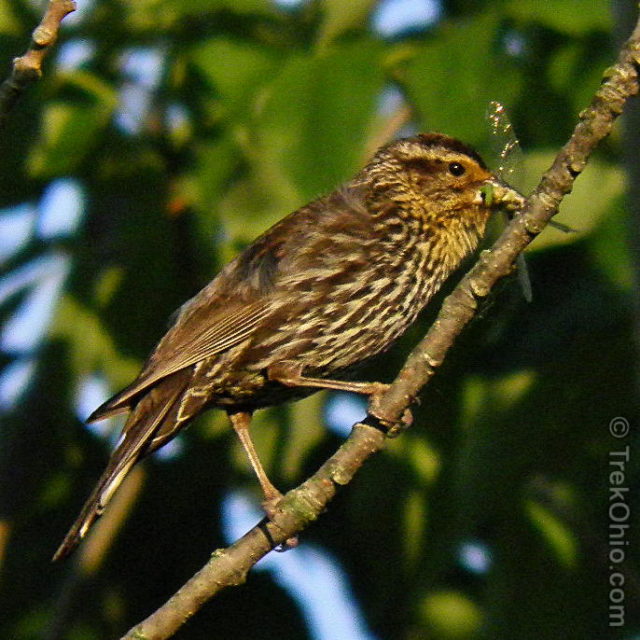
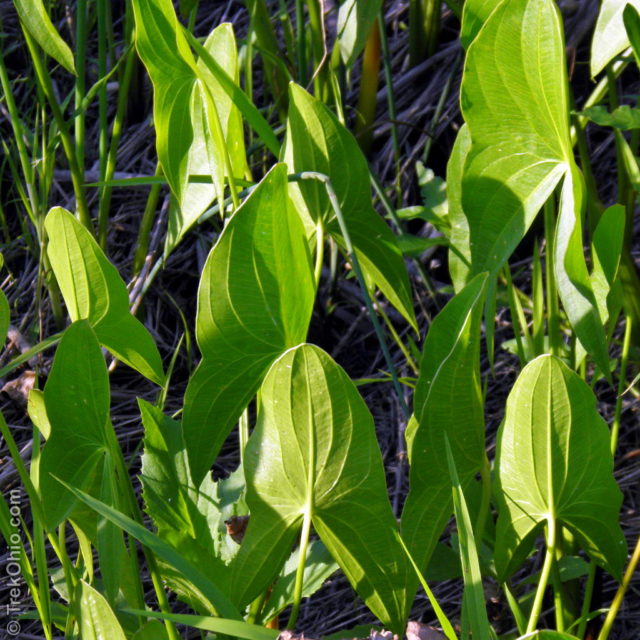
But cattails aren’t the only aquatic plants in Hoover Meadows. Another plant that thrives in shallow wetlands is the Arrowhead plant. It’s also known as Indian potato, duck potato, or wapato. As one of the names suggests, this plant was a source of food for Native Americans. The Arrowhead’s tubers are said to taste similar to potatoes and chestnuts (no, I don’t understand how it can taste like both either, but that’s what Wikipedia says ![]() ). The tubers can be eaten raw, or cooked in much the same way that you would cook a potato. Alternatively you can turn the tubers into a flour by slicing them thinly, drying them out, and then grinding them up. I don’t have a photo of the tubers myself, but here’s a link to a Google image search for the tubers.
). The tubers can be eaten raw, or cooked in much the same way that you would cook a potato. Alternatively you can turn the tubers into a flour by slicing them thinly, drying them out, and then grinding them up. I don’t have a photo of the tubers myself, but here’s a link to a Google image search for the tubers.
You can tell I’m a middle-aged woman who’s continually struggling with her weight because after reading about Indian potatoes my first thought was, “I wonder if they’re low-carb?” ![]() It turns out that certain parts of cattail are edible too. I’ve included a link below in case you are interested
It turns out that certain parts of cattail are edible too. I’ve included a link below in case you are interested
Like most parks and preserves, the management of Hoover Meadows prohibits foraging for food or disturbing the vegetation, so if you decide you’d like to try foraging, you need to go some place else to do it. Me? I’m just making a mental note in the event that the zombie apocalypse actually comes to pass. ![]()
I was once following the trail in Hoover Meadows when the ground below my feet suddenly became squishy. I looked down and was surprised to see what I was standing on.
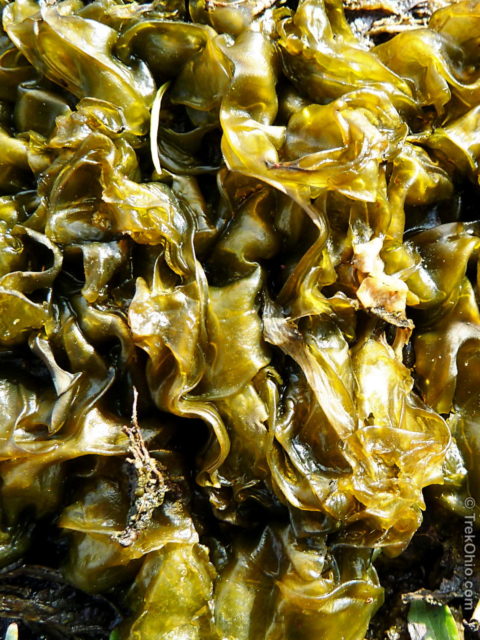
 I think this squishy stuff is some sort of bryophyte.
I think this squishy stuff is some sort of bryophyte.If anyone knows what this is, I’d be interested in hearing.
As you approach the rear of the property, the meadows give way to woods. Near the transition point is a row of dead trees (pictured below). Typically farmers plant trees along the edge of crops or beside fence rows, and that’s what these look like. They’re dead now because their roots were drowned by the standing water that surrounds them. I had wondered how this once dry land had become wetland, and I finally found out when I came across an article by Charlie Bombaci of the Columbus Audubon Society (linked below). Wetland was created in Hoover Meadows as an adjudication settlement by the Ohio Department of Transportation to make up for eliminating wetland elsewhere while constructing a road. Prior to becoming park land, this property had been a pasture.
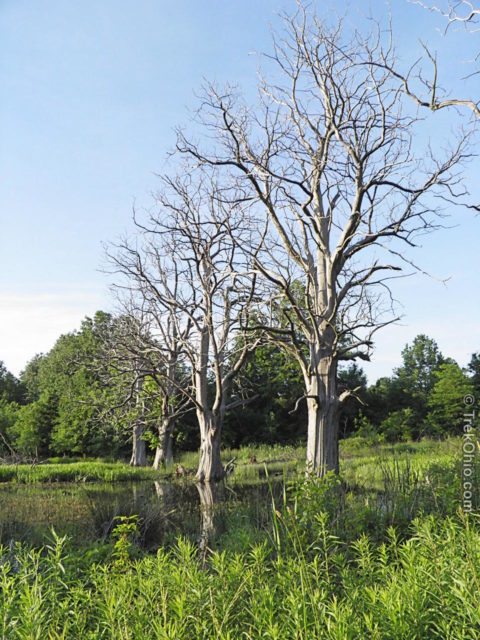
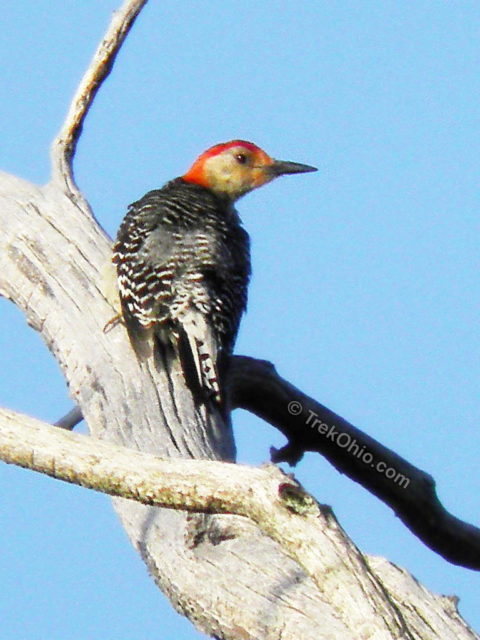
Charlie Bombaci’s article lists 85 species of bird that have been spotted in this area during a previous January, many of which I’ve never seen in my life. So I guess I’ll be heading on back there soon. 🙂 If you think you’d like to go there too, I recommend applying some DEET if you visit while the mosquitoes are out and about. Conveniently nearby is Hoover Mudflats Boardwalk, so consider taking in both sites while you are out. We posted a review (including embedded map) of the Boardwalk here, and to look over all the articles that we’ve posted on it, check out our tag for Hoover Mudflats Boardwalk.
Additional information
- Hoover Reservoir Park, by the city of Columbus
- TrekOhio:
- The incredible cattail – The super Wal-Mart of the swamp, by Kevin F. Duffy; this is all about eating cattails.
- Wikipedia: Agelaius phoeniceus (Red-winged Blackbird)
- Wikipedia: Tree Swallow
- Wikipedia: Sagittaria latifolia (Arrowhead plant)
Location
Hoover Meadows’ address is 3715 Sunbury Road, Galena, OH 43021. It’s located in Delaware County about 1.5 miles south of the Village of Galena, and 0.25 miles north of Harlem Road. If you click on “View Larger Map” below the embedded map, you can get directions via Google.
More on Birds
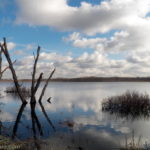
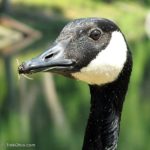
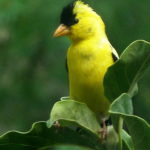
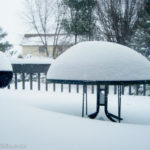
Great article! I once read in an edible plants book that eating the roots of cattails involves first scraping off the leaches–I wonder if the same is true for duck potato. The link about eating cattails was really interesting!
Such a beautiful series, and lovely area….
Nice set of photos Deborah and Robert – the part about ticks scares me.I have heard how nasty they can be (lyme disease).
Thanks, Jane. 🙂 The good news is that ticks are completely blind, so they can’t leap on you, or drop on you from trees (they wouldn’t even know you were there!). So if you don’t brush up against them, they can’t get you. Thankfully the mown paths here are so wide that you can navigate the fields without brushing up against any of the plants.
It used to be that the black-legged tick that carries Lyme disease hadn’t really made it into Ohio yet. But the bad news is they finally spread across the state last year (see Bad tick-related news for Ohio). I’m planning on treating some of my hiking clothes with Permethrin to help protect me, but I was saddened to learn that this is now an issue.